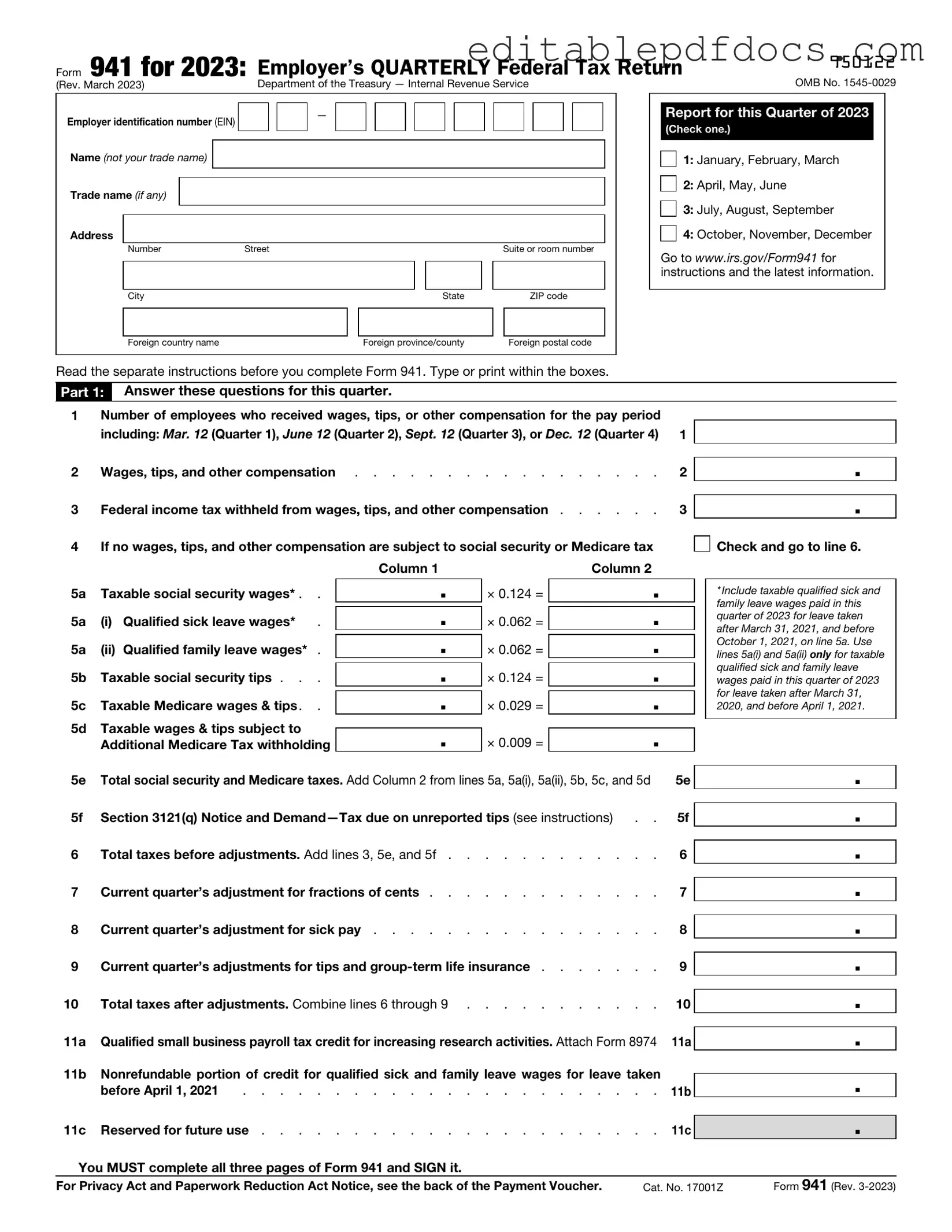Filling out the IRS Form 941 can be a daunting task for many business owners. This quarterly form is essential for reporting income taxes, Social Security tax, and Medicare tax withheld from employees’ paychecks. However, mistakes can lead to penalties or delays in processing. Here are five common errors to avoid when completing this important document.
One frequent mistake is incorrect employee counts. Some people miscount the number of employees for the quarter. This error can lead to incorrect tax calculations and potential fines. Always double-check your employee roster for accuracy before submitting the form. It’s crucial to ensure that you account for all employees who received wages during the reporting period.
Another common pitfall is misreporting wages. This can happen when employers forget to include certain types of compensation, such as bonuses or overtime pay. Each dollar matters when it comes to tax reporting. Make sure to review your payroll records thoroughly to capture all forms of employee compensation accurately.
Many individuals also fail to calculate tax liabilities correctly. The IRS Form 941 requires precise calculations of federal income tax withheld, as well as Social Security and Medicare taxes. Errors in these calculations can lead to discrepancies that may raise red flags with the IRS. Utilizing payroll software or consulting with a tax professional can help ensure accuracy.
Another mistake involves not signing the form. It may seem simple, but forgetting to sign can delay processing. The IRS requires a signature to validate the form. Always remember to sign and date the form before submission. This small step can prevent unnecessary complications.
Finally, some people neglect to keep copies of their submitted forms. It’s essential to maintain records of what you’ve filed, in case of future audits or discrepancies. Keeping copies of your IRS Form 941 not only helps in tracking your submissions but also serves as a reference for future filings. Good record-keeping can save time and stress down the road.
